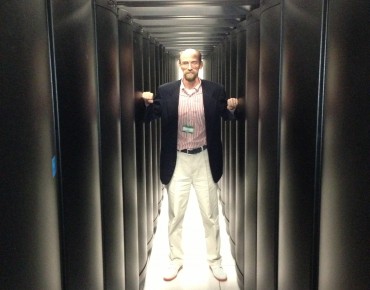Editor’s Welcome to EnterpriseTech

It is with great excitement that I introduce you to EnterpriseTech, a new publication that is set to tackle the host of issues large-scale enterprise technology users and decision-makers face during these times of economic and technical change.
In my nearly 25 years of covering the IT market, certain shifts or inflection points stand out…I believe that we are on the precipice of another jolt - this one of tectonic proportions, even if the rumblings are still just under feet at this moment…
EnterpriseTech is all about exploring, finding out how large enterprises are building the next generation of scalable systems and the applications that span them. Frankly, no one knows for sure where enterprises are going to get their inspiration from – and that is the exciting bit.
That means to do this right will require a solid foundation in the server, storage, and switching infrastructure that comprises a $145 billion market worldwide according to IDC, with an eye on those specific technologies that could be deployed at extreme scale. It also means paying close attention to the operating systems, middleware, development tools, and systems management tools that are intended to be used at scale. Some of this software is trickling down from on high in the supercomputing realm into enterprise data centers, some of it is coming in from the side from hyperscale Web application operators.
What we can know for sure is that the applications will drive the systems, and perhaps moreso today than at any time in the past. Both the supercomputing sector and hyperscale Web operators demand processors and system interconnects tailored to their needs and in form factors that increase the compute density of the systems and the energy efficiency of their data centers. The energy efficiency of computing and data storage doesn't mean that much to a small and medium business, but it absolutely means something to a large enterprise running a large data center. That something is called profits, and that is how enterprises keep score.
What we find exciting about EnterpriseTech is that it is a chance to get a 3D view of how all of the elements of a system – and we am using that term very loosely – come together. The system we are talking about is not just servers, switches, and storage with an operating system slapped on each of the elements. Rather, the system is the hardware, software, and people coming together to solve a problem, and allocating the money to do it. The problems are as interesting as the information technology, and that sometimes gets forgotten. EnterpriseTech is therefore not just about what technology is out there to help large enterprises scale up or scale out their biggest, baddest applications, but how and why they implement these technologies – or, in some cases, why they decide not to use them.
What we also know is that the IT sector is undergoing a period of change that is perhaps as dramatic as the creation of mainframes five decades ago and the commercialization of the Internet two decades ago. EnterpriseTech was created to help large enterprises, and the companies that want to be smart like them, chart their course through this change.
Enterprise data centers are drawing ideas and inspiration from a number of places.
First, supercomputers are an obvious influence. These big systems, which run scientific simulations, have pushed the limits of processing, memory, storage, and networking hardware for decades. They have also forced the creation of new systems software for developing and running applications on those increasingly scalable systems. Many of the technologies developed for supercomputer centers are now in use by the largest enterprises in the world today, albeit often in slightly different forms and, ironically, in ways that companies in the finance, media and entertainment, energy, healthcare, and retail industries would probably not consider supercomputing.
But this is not the only outside influence on IT at large enterprises. The very scale and scope of applications has reached massive proportions at the largest Web sites, and companies like Google, Facebook, Yahoo, and Amazon are changing the way systems and the applications that ride on them are built. These companies think of the data center as the new computer, and they engineer the entire set of infrastructure to work as a single unit.
Then there is the influence of infrastructure and platform clouds, where enterprises can run their applications if they so choose but thus far, most have not. Amazon, Microsoft, Google, and Rackspace Hosting are the largest ones, with the server incumbents such as IBM and Hewlett-Packard trying to puff up their own clouds to compete. The irony here is that these companies are examples of large enterprises running extremely scalable infrastructure, and they in turn are hoping to sell big slices of it to other large enterprises who, for whatever reason, may sometimes decide to rent rather than build their infrastructure.
And finally, the largest enterprises in the world are testing out new ideas of their own, and the systems they build to support tens to hundreds of thousands of users are every bit as sophisticated as the largest supercomputer sites and public clouds. Even moderately sized companies with systems with relatively few users – and let's just use high frequency trading companies as one example – are nonetheless building complex systems for applications that push the very extremes of performance and low-latency.
Our mission at EnterpriseTech is an ambitious one: To seek out any new technology that is appropriate for the largest commercial data centers in the world as they push their applications to the extremes. Any publication is a journey, not a destination. So let's get started and let's have some fun.
Looking forward to hearing from you--
Timothy Prickett Morgan
Editor in Chief, EnterpriseTech










